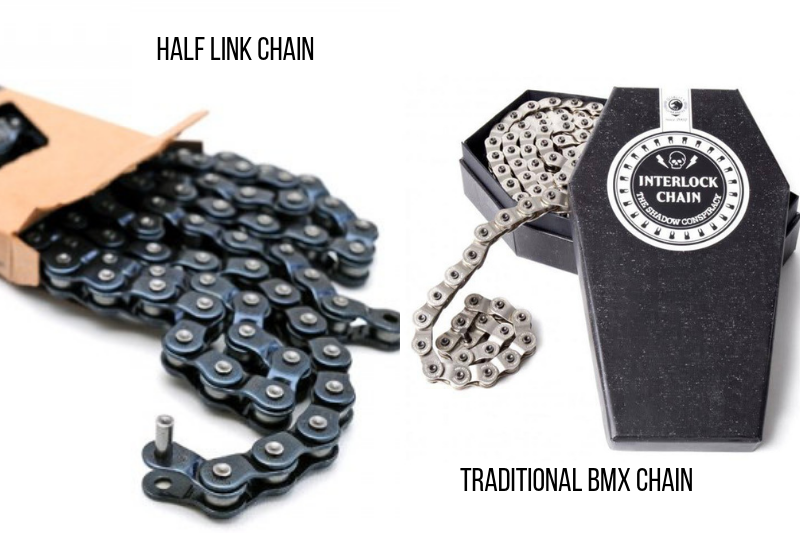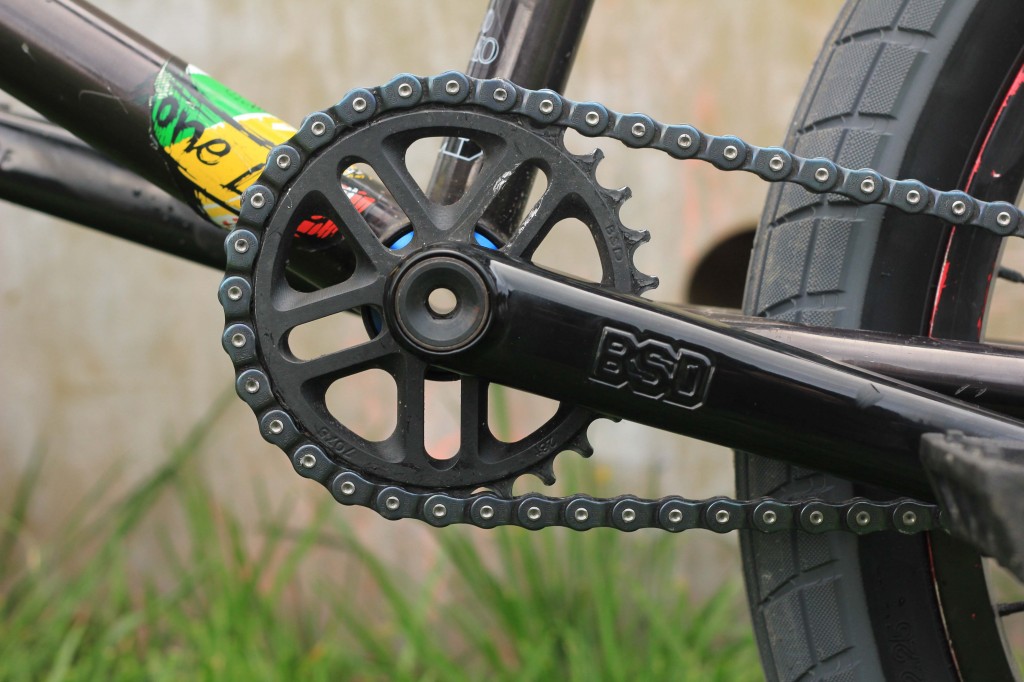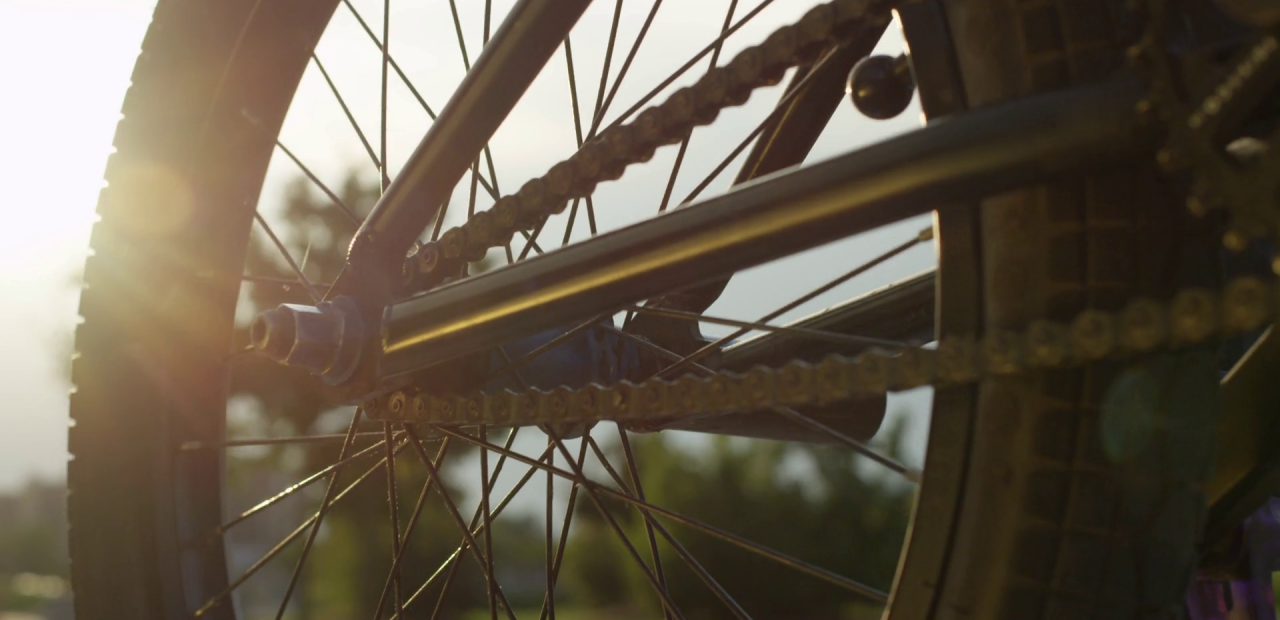A Guide to BMX Bike Chains
Your BMX bike’s chain is one of the most important elements of your bike as it connects both drivetrains. It’s the part that’s responsible for pedal power being converted into a forward movement, which means buying the right chain and maintaining it is essential. Most bike chains are made of alloy steel for strength, but there are also some models made of high-end alloy parts to reduce weight. BMX chains are slightly different from road or mountain bike chains, due to the fact that BMX bikes don’t have transmissions.

The two basic types are traditional and half link chains. Traditional BMX bike chains use the same inner link/outer link configuration as mountain and road bikes. Basically, it’s one link that consists of two half links, outer and inner. On the other hand, a BMX bike chain half link is made from identical links that feature a thin and a thick end. The thick end is the standard width (same as traditional chains), while the thin end is the same width as the inner link on traditional chains.

A BMX bike chain half link is made this way so that you don’t have to remove as much material to shorten it. This allows for more precise adjustments, which in turn allows riders to get their back-wheel position set up to their preference. Most BMX bike chains, regardless of their type have the standard 1/8inches width. There are narrower chains with only 3/32 width, but these are primarily used for racing. BMX chains are sold in the standard lengths of 112, 98 or 86 links, so you’ll need a chain tool to get the right size for your bike’s specific drivetrain before installing it.
All bike chains, regardless of their quality, have a limited lifespan. As the chain starts to wear out, it will stretch, and it will eventually start skipping over teeth on the sprocket instead of meshing with them. This is an indicator that you need a new chain. To prolong its lifespan, it’s important to maintain it by keeping it clean and lubricated. Lubrication is important because when chains drop into the valley created between the teeth, two metal surfaces rub together and wear each other down. Additionally, the chain gets worn down by the grinding paste from the transmission. Multiply all of this by a hundred times, and you’ll get approximately just how much rubbing there is between the surfaces every time you turn the pedals.

















